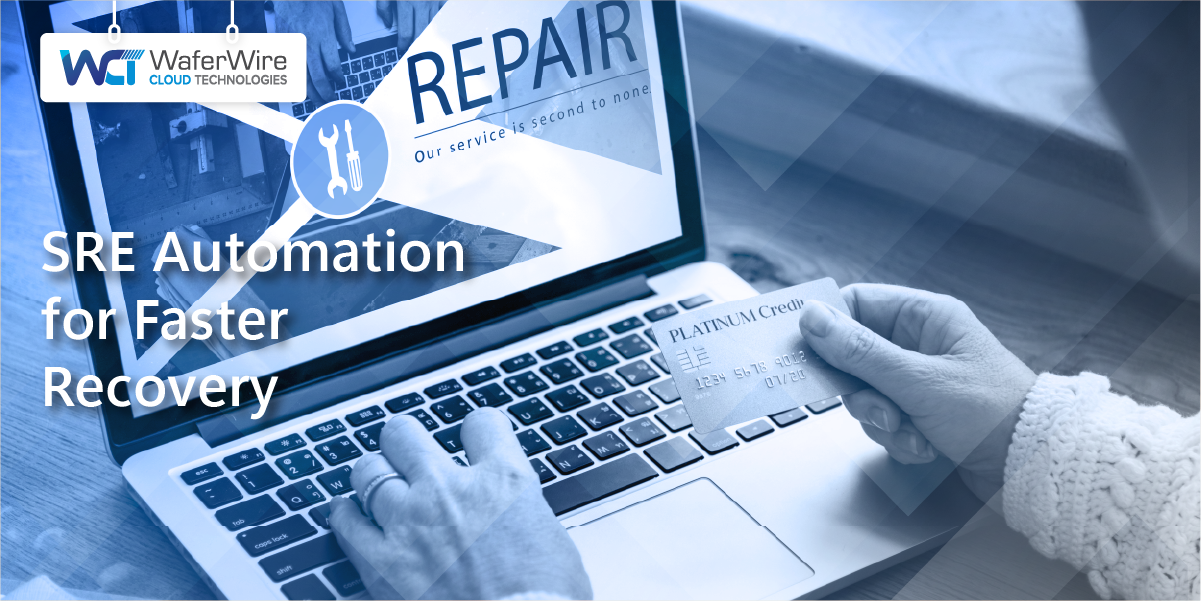

A leading e-commerce platform is experiencing a sudden surge in traffic during a flash sale. The increased load triggers a performance issue in the backend system, leading to a slowdown of critical services.In the traditional incident response approach, the team must manually detect the problem, analyze logs, and initiate the resolution process. The delay in identifying and addressing the root cause causes prolonged downtime, leading to frustrated customers and significant revenue losses.This scenario highlights the urgency for an automated remediation system that can swiftly detect, diagnose, and resolve incidents.To implement automated remediation using SRE principles, these are the steps for you:Step 1:Monitoring and alerting: The first step is to set up robust monitoring and alerting systems. SREs use monitoring tools to collect and analyze data on system performance, service health, and other relevant metrics. The monitoring system triggers alerts during an incident, or a threshold being breached.Step 2:Incident classification and severity: SREs define incident categories and severity levels based on their impact on the system and users. Automated remediation can vary depending on the incident type and its severity.Step 3:Runbooks and playbooks: SREs create detailed runbooks or playbooks that outline the steps to remediate known incidents. These documents describe the exact procedures and actions you must take for each type of incident. Playbooks should be tested and refined regularly to ensure accuracy and effectiveness.Step 4:Automation tools: SREs use automation tools and scripts to execute the steps outlined in the playbooks. These tools can range from simple scripts to sophisticated configuration management systems or Infrastructure-as-Code (IaC) platforms.Step 5:Automated response triggers: The monitoring system is configured to automatically trigger the appropriate playbook when specific conditions are met. For example, if CPU usage exceeds a certain threshold, the system can automatically initiate the CPU-intensive application's restart procedure.Step 6:Auto-remediation actions: The automation may include various steps, depending on the incident type. They may be restarting services, rolling back deployments, reconfiguring components, or switching to redundant systems. The goal is to bring the system back to a healthy state automatically.Step 7:Safety measures: Automation remediation must be carefully implemented to avoid exacerbating the current situation or causing unintended consequences. SREs often implement safety measures, such as rate limits or checks, to prevent automated actions from causing more harm.Step 8:Escalation and human oversight: In some cases, the automation might fail to resolve an incident entirely, or the situation might require human intervention. SREs incorporate escalation mechanisms that notify on-call personnel and provide them with the necessary context and data to take over.Step 9:Testing and validation: Before implementing automated remediation in production environments, SREs thoroughly test and validate the automation in staging or testing environments. This ensures the automated processes work as expected and do not introduce new issues.Step 10:Continuous improvement: SREs continuously learn from incidents and use post-mortem analysis to improve the automated remediation process. This includes updating playbooks, refining automation scripts, and addressing any deficiencies found during incident resolution.
Want to optimize your recovery plan?
Here's how automation remediation reduces MTTR:
To summarize, implementing automated remediation using SRE principles brings numerous benefits to organizations. By reducing Mean Time to Recovery (MTTR), automation ensures faster incident detection, immediate responses, and consistent actions without human intervention. This leads to improved reliability, 24/7 availability, and reduced risk of downtime, enhancing overall system performance and customer satisfaction. Additionally, automation enables efficient resource utilization, continuous improvement, and the ability to scale with demand, making it a valuable investment for organizations seeking to optimize their incident response and maintain a robust and reliable IT infrastructure. You can embrace automated remediation and empower your organization to navigate the ever-evolving digital landscape with confidence and agility, meeting customer expectations and driving business success. You can consider partnering with us for SRE automation and services. We offer tailored solutions and comprehensive support to optimize IT operations and drive business success. You can check out our SRE services if you wish to boost efficiency and enhance your IT operations with us. Rest, the ball is in your court.
